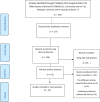Knowledge, attitude and practice towards kangaroo mother care among postnatal women in Ethiopia: Systematic review and meta-analysis
- PMID: 35522657
- PMCID: PMC9075620
- DOI: 10.1371/journal.pone.0265411
Knowledge, attitude and practice towards kangaroo mother care among postnatal women in Ethiopia: Systematic review and meta-analysis
Abstract
Background: Kangaroo mother care is a key procedure in reducing neonatal mortality and morbidity associated with preterm birth. In Ethiopia, neonatal death remains a serious problem, and this study aims to determine the prevalence of the knowledge, attitudes and practice of kangaroo mother care among Ethiopia women.
Methods: PubMed, Web of Science, Google Scholar, EMBASE and the Ethiopian University online library were searched. Data were extracted using Microsoft Excel and analysed using STATA statistical software (v. 11). Publication bias was checked by forest plot, Begg's rank test and Egger's regression test. To look for heterogeneity, I2 were computed and an overall estimated analysis carried out. Subgroup analysis was done by region, study setting, publication, gestational age, birth weight and component of kangaroo care. The Joanna Briggs Institute risk of bias assessment tool was used. We carried out a leave one out sensitivity analysis.
Results: Out of 273 articles retrieved, 16 studies met the eligibility criteria and are thus included in this study. Those 16 studies had a total of 12,345 respondents who reported kangaroo mother practice, with five (comprising 1,232 participants combined) reporting that both knowledge and attitude were used to determine the overall estimation. The pooled estimates of good knowledge, positive attitude and poor practice of kangaroo mother care were found to be 64.62% (95% CI: 47.15%-82.09%; I2 = 97.8%), 61.55% (49.73%-73.38%; I2 = 94.8%) and 45.7% (95% CI: 37.23%-54.09%; I2 = 98.5%), respectively. This study is limited to postnatal women and does not take account their domestic partners or health providers.
Conclusion: The findings revealed significant gaps in the knowledge, attitudes and practice of kangaroo mother care in Ethiopia when compared with other developing countries. Therefore, kangaroo mother care training to women, along with further studies on domestic partners and health providers.
Conflict of interest statement
The authors declared that they have no competing interests
Figures









Similar articles
-
Knowledge, attitude, practice and determinants of exclusive breastfeeding among women in Ethiopia: Systematic review and meta-analysis.Public Health Pract (Oxf). 2023 Mar 5;5:100373. doi: 10.1016/j.puhip.2023.100373. eCollection 2023 Jun. Public Health Pract (Oxf). 2023. PMID: 36941951 Free PMC article.
-
Pregnant women's knowledge, attitude, and practice towards COVID-19 infection prevention in Ethiopia: A systematic review and meta-analysis.PLoS One. 2022 Oct 26;17(10):e0276692. doi: 10.1371/journal.pone.0276692. eCollection 2022. PLoS One. 2022. PMID: 36288349 Free PMC article.
-
The magnitude of episiotomy among women who gave birth in Ethiopia: Systematic review and meta-analysis.Afr J Reprod Health. 2022 Apr;26(4):98-109. doi: 10.29063/ajrh2022/v26i4.11. Afr J Reprod Health. 2022. PMID: 37584989
-
Knowledge and practice of mothers towards sunshine exposure of their children in Ethiopia: a systematic review and meta-analysis.BMC Pediatr. 2022 Apr 18;22(1):213. doi: 10.1186/s12887-022-03281-7. BMC Pediatr. 2022. PMID: 35436897 Free PMC article.
-
Knowledge, attitude and practice towards COVID-19 among health professionals in Ethiopia: A systematic review and meta-analysis.PLoS One. 2021 Feb 19;16(2):e0247204. doi: 10.1371/journal.pone.0247204. eCollection 2021. PLoS One. 2021. PMID: 33606744 Free PMC article.
Cited by
-
The impact of Kangaroo Care on role adaptation and subjective well-being in primiparous mothers following vaginal delivery: A retrospective study.Medicine (Baltimore). 2025 Jun 27;104(26):e42471. doi: 10.1097/MD.0000000000042471. Medicine (Baltimore). 2025. PMID: 40587695 Free PMC article.
References
-
- WHO and UNICEF Joint Statement. (2009). Home visits for a newborn child: a strategy to improve survival - PubMed
-
- Lawn J, Blencowe H, Oza S, You D, Lee A, Waiswa P, et al.. Progress, priorities, and potential beyond survival. Lancet. 2014;384:189–205. - PubMed
-
- UN Inter-agency Group for Child Mortality Estimation. Levels & trends in child mortality: report 2019. New York: UNICEF; 2019. https://www.unicef.org/media/60561/file/UN-IGME-child-mortality-report-2.... Accessed 14 Oct 2019
Publication types
MeSH terms
LinkOut - more resources
Full Text Sources
Miscellaneous

